- Top Trumpet Embouchure Techniques: Options for Beginners Through Professionals - October 12, 2022
- Is the Trumpet Hard to Learn? - September 30, 2022
- Best Leblanc Clarinet Models Guide: From Soprano to Contrabass - September 5, 2022
Have you ever wondered about the tuba’s smaller cousin? If you like the idea of the tuba but not the size, I think you should learn how to play the euphonium.
The euphonium is smaller, so it can be easier to handle. But you still get to explore the wonders of the low brass section, and you can get some cool parts in ensembles.
It’s also not the most common, so it can be a nice choice if you want to avoid a ton of competition. Every wind ensemble I’ve been in could use more euphonium players.
Bottom Line Up Front: The euphonium requires a bit more air than smaller brass instruments. Be sure you work on your breathing, and choose a good model to help set yourself up for musical success.
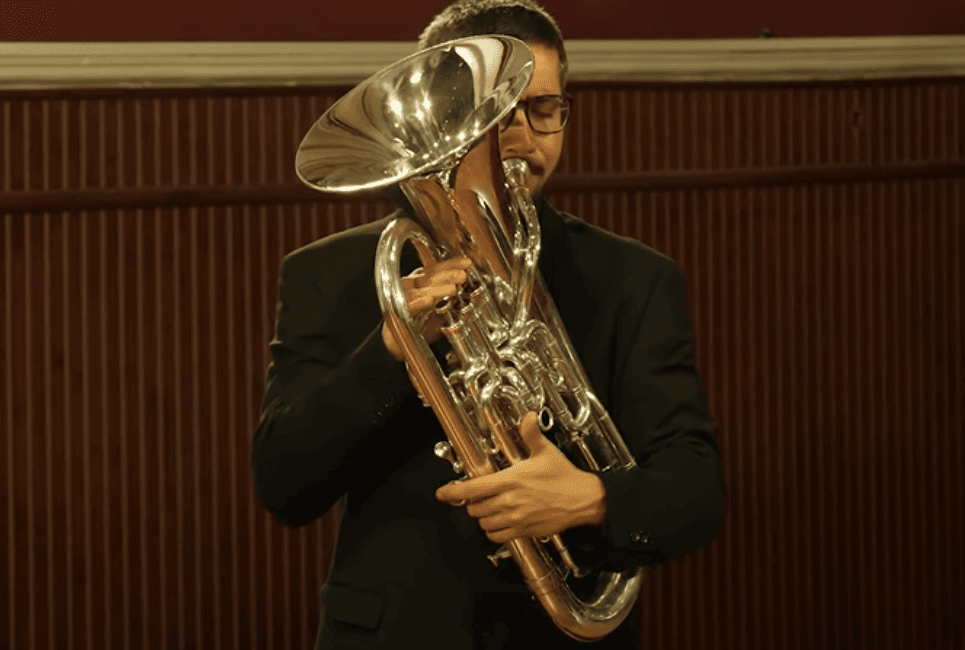
How to Play the Euphonium
If you like the sound or look of the euphonium, you should learn to play it. One of my favorite things about it is that it’s not as competitive as some other brass instruments.
That means you could still get into a good ensemble even if you aren’t the best player yet. Of course, you should already have some interest in the instrument so that you’ll want to practice.
If you don’t care about it, you’ll never want to practice, so you’ll either not get better, or you’ll improve slowly. Here are some of my best tips for how to start playing the euphonium.
Learn to Buzz
If the euphonium is the first brass instrument you’re learning, you need to buzz your lips. This is how you produce a sound on all brass instruments.
You place your lips together and try to force air out through a small hole. That will cause your lips to buzz against each other, and you’ll need to recreate that against your euphonium mouthpiece.
For now, practice buzzing without the mouthpiece or instrument. It can take a long time to master the art of the buzz, so make sure you’re comfortable doing it before you try to play the euphonium.
Work on Your Breathing
Another vital fundamental of playing the euphonium is to learn how to breathe well. You probably know how to breathe, but I’m talking about breathing to help play a wind instrument.
Practice breathing in and holding your breath for a few seconds. Then, slowly release the air rather than all at once and see how long it takes for you to breathe out.
I still have to work on my breathing even after years of playing music. You don’t have to be perfect at holding your breath, but you should work on it to help get a good tone on your euphonium.
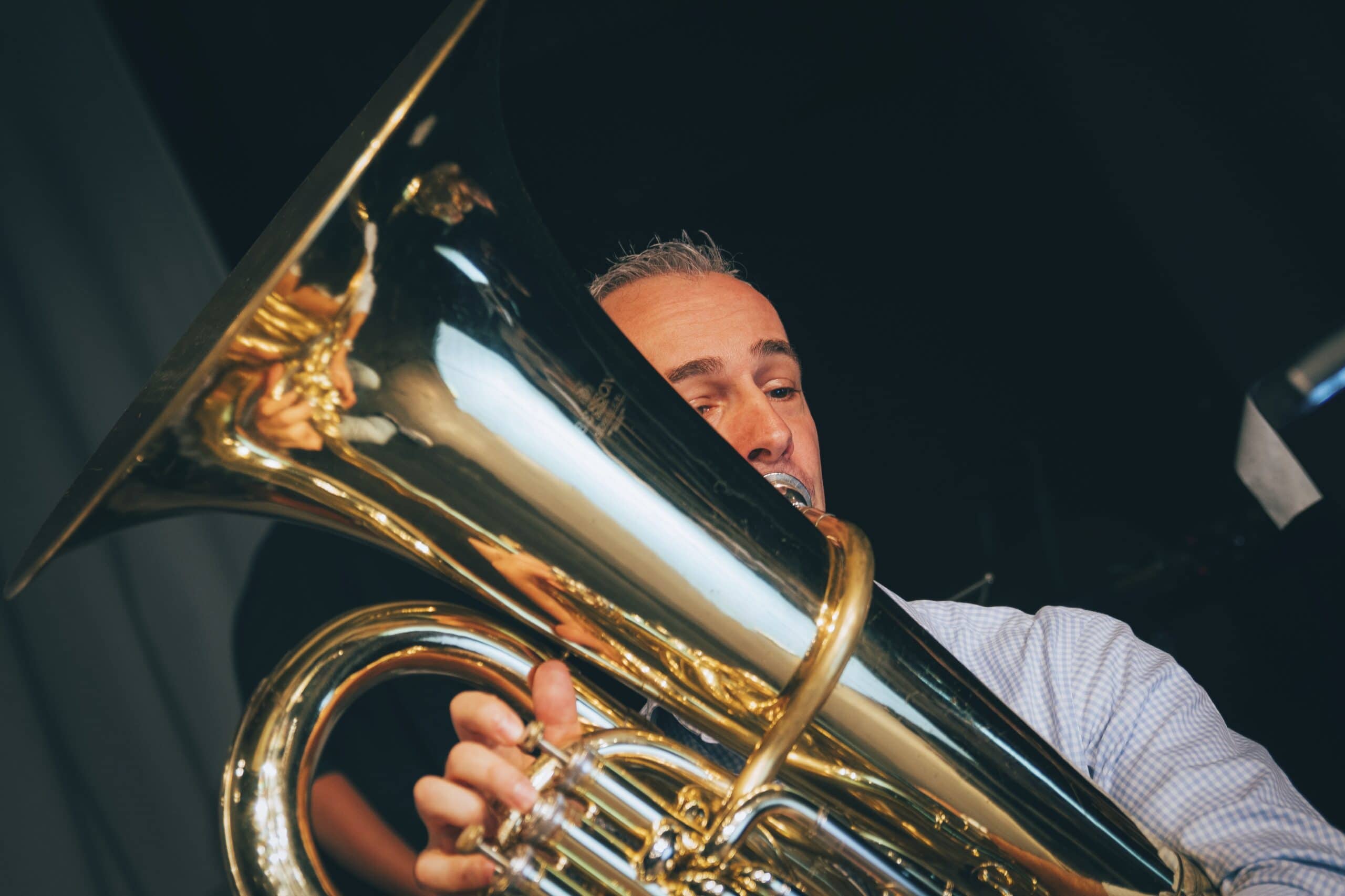
Get a Good Model
Like with any instrument, you need the best possible euphonium you can afford. The best model will be easy to hold and play, so you won’t have to struggle as much to get a sound out.
You may still need to practice, but you shouldn’t have to deal with an instrument that will hold you back. Some euphoniums are pretty cheap, so you don’t need a massive budget.
If you’re tight on cash, I’d recommend buying a used instrument or renting one from a local music store. Many rental programs are rent-to-own, so you can pay off the euphonium over time.
Know the Euphonium vs. Baritone
As you shop for your ideal model, make sure you compare euphoniums and baritones. Baritones are a marching horn, and you hold them up and out, like a large trumpet.
There are also marching euphoniums with similar designs. However, I’d recommend starting on a standard euphonium, which you hold closer to your body, like a small tuba.
The euphonium is easier to hold since the center of gravity is lower and right next to your torso. You’ll have fewer issues to worry about when learning the instrument.
Start with the Mouthpiece
Once you get your hands on a nice euphonium, you can start practicing with the mouthpiece. Most beginner models include one, but you can also buy one separately.
Either way, use your lip buzzing skills to practice getting a sound with the mouthpiece. That will provide you with a bit of resistance, so you may need to work on your buzzing a little more.
It can be tempting to want to practice with the entire instrument first. However, using just the mouthpiece means you don’t have to worry about fingerings, at least for now.
Hold the Euphonium
Now, you get to take your euphonium out of the case and play around with it. First, you should learn how to hold the euphonium properly.
Assuming you have a piston valve model, you’ll want to hold the instrument to the right side of your torso. Use your left hand and arm to support the euphonium so that your right hand is free to press the valves.
If you happen to get a rotary valve model, you’ll hold the euphonium more to your left. But you’ll still use your right hand to trigger the valves.
Decide Between Treble or Bass
You can find euphonium music written in both the treble and bass clefs. I’d recommend getting music in the bass clef because it will be written in concert pitch.
However, if you’re switching from the trumpet, you may prefer to stick to the treble clef. I don’t know why, but composers write treble clef parts an octave and a major second higher than how they sound.
Eventually, you may want to learn to read both types of parts. But choose one for now, and keep in mind that if you read in bass clef, you might need to learn tenor clef for higher euphonium parts.
Use a Method Book
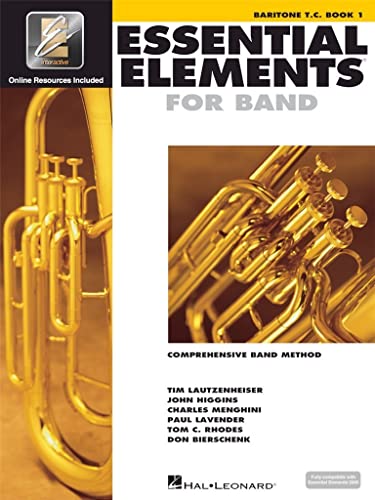
Once you decide how you want to read euphonium music, I’d suggest getting a good method book. You can find method books that use the treble clef and bass clef, so choose the one you prefer.
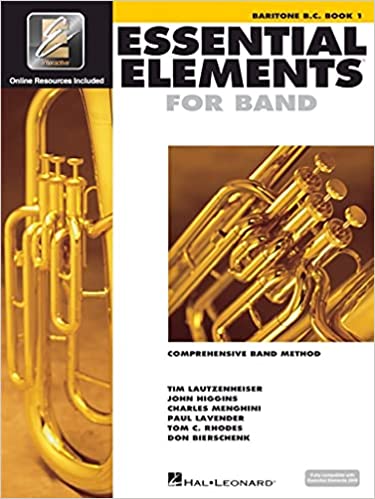
Now, if you or your child is learning the euphonium in a band setting, you may need to get a specific book. Bands often use method books to teach all of the instruments, so you’d need the series your band uses.
If you’re learning on your own, you can choose the book or series that you like the best or that’s most affordable. Then, use the book to teach yourself the first few notes.
Take Some Lessons
If you only follow one of my tips for how to play the euphonium, let it be this. Private lessons can be expensive and time-consuming, but many teachers are becoming more flexible.
You can take lessons every week or every other week, maybe even once a month. Then, you can get personalized guidance and feedback, but you can do it on any budget.
I grew up taking private lessons on all sorts of instruments, and they always helped me progress relatively quickly. If you can’t afford regular lessons, take at least a few as you start to help you avoid bad habits.
Practice Regularly
Another one of the best things you can do is to practice your euphonium regularly. Of course, if you take lessons, practicing between them will ensure you make the most of your time with your teacher.
If you’re mostly teaching yourself, practicing regularly is even more crucial. You don’t need to practice for hours, and you probably shouldn’t do so as a beginner.
But set aside 10 to 20 minutes a day to practice music. Go over any exercises you’re working on, and learn a new exercise or two each week.
Eventually, you’ll finish your current method book, and you can advance to something else. Then, you’ll be able to get a new book so that you can keep getting better at music.
Experiment with the Fourth Valve
Many beginner euphoniums only have three valves, but some models have four valves. You don’t need the fourth valve to start playing, but if you have it, you can play around with it.
On a euphonium the extra valve lets you play chromatically between the first and second partials. You can also get better intonation on your instrument.
Some euphoniums place the fourth valve next to the main three, while others place it on the side. In that case, you’ll use your left hand to trigger the valve. But if you don’t have the fourth valve, don’t worry; you can always upgrade later.
Work with a Tuner
Speaking of intonation, you should spend some time working with a tuner. You can use a physical tuner, like a Korg, and you can even hook it up directly to your euphonium so that it doesn’t pick up background noise.
I like using an app on my phone or iPad since I always have those with me when I practice. The app I use is Tunable, and I love how it gives you a visual history of your intonation.
Use your tuner to learn when you need to play sharper or flatter than you are. You can use your air and lips to help change the pitch, but if it’s really off, you may need to adjust your slides.
Join a Wind Ensemble
You can learn to play the euphonium on your own, but you may get bored. One of the best ways to hold yourself accountable is to join a wind ensemble either through a local college or to find a community group.
In grad school, I learned that the euphonium is one of two instruments where you actually want more than one player per part (the other is the clarinet). And since euphoniums aren’t that common, there’s a good chance your local band needs more.
Unfortunately, you won’t usually be able to play the euphonium in an orchestra. But if wind ensembles aren’t your thing, you could also look into joining a brass band.
Best Euphoniums for Beginners
As I mentioned, one of the most important parts of learning the euphonium is getting a good model. But when you’re a beginner, you may not know where to start.
There are a lot of models on the market, and some aren’t ideal for new musicians. I looked for some of the best models you can try when you’re new to the euphonium.
Here are some of the best models I found.
Yamaha YEP-201
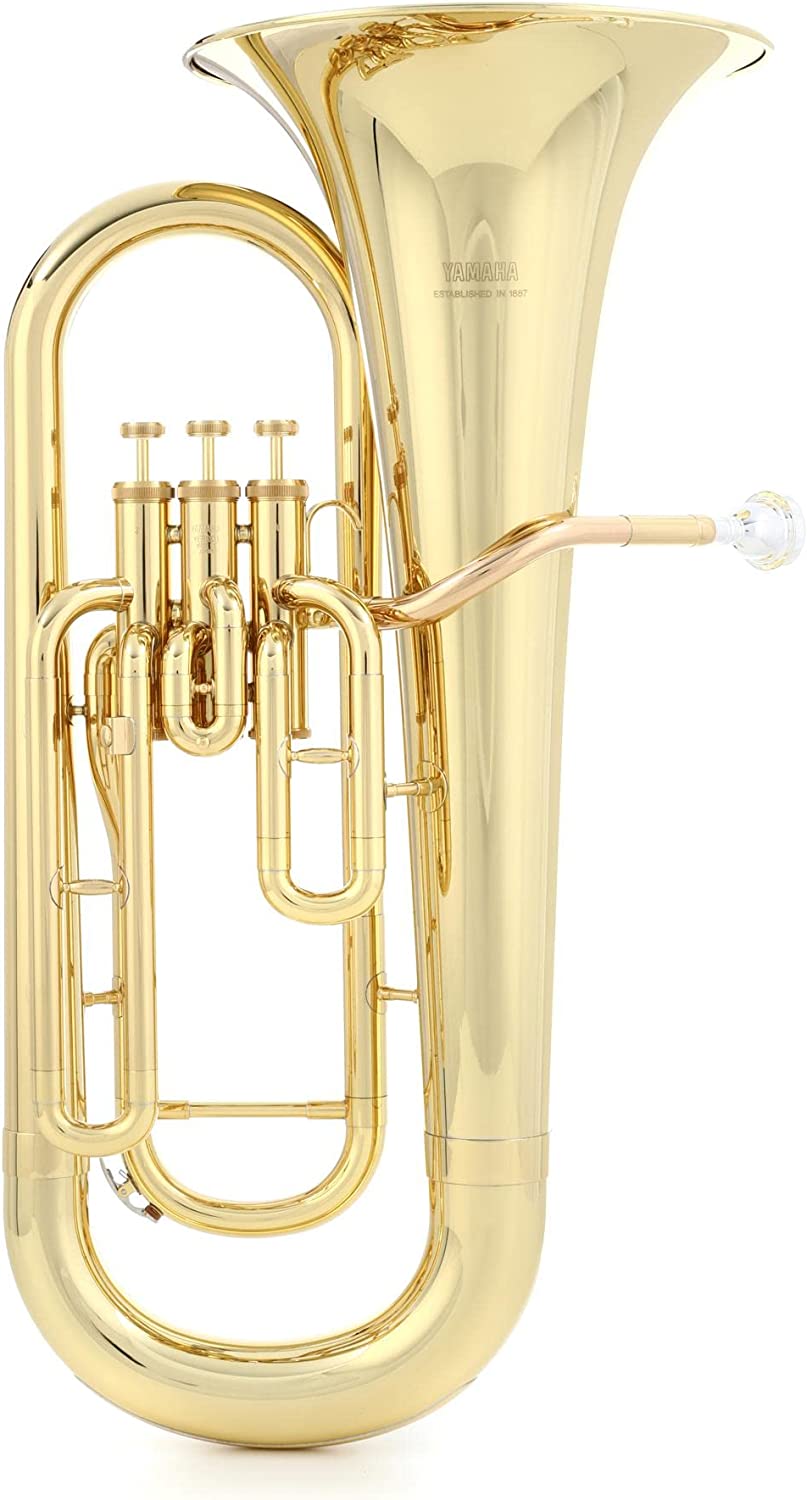
The Yamaha YEP-201 is a fantastic beginner euphonium to try. It features three valves, which is pretty standard for students, so you don’t have to learn to use four valves.
This model mostly uses yellow brass and has an 11-inch bell, but it has a gold brass leadpipe. You’ll receive a mouthpiece and case with the instrument, so you have the basics to start playing.
Like other Yamaha instruments, this one is a bit expensive. However, it’s one of the best quality models for beginners, and it should last you for multiple years.
Pros
- Easy to play
- Good materials
- Nice design
- Durable
- Large bell
Cons
- Quite expensive
- Only three valves
Jupiter JEP700
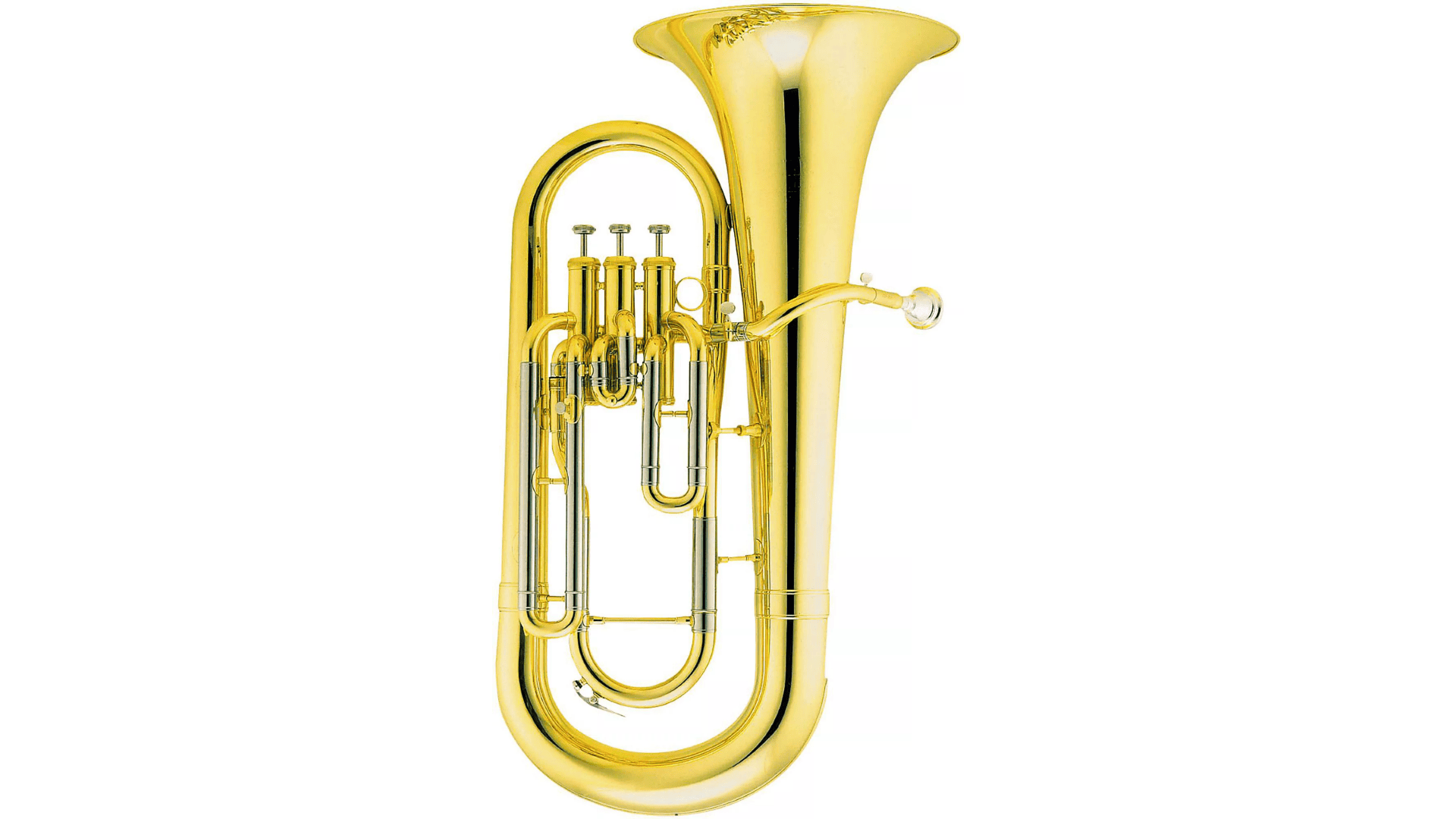
Another fantastic instrument to consider is the Jupiter JEP700, which shares many of the Yamaha’s specs. The model features yellow brass for the material along with stainless steel piston valves.
It has three valves, which is enough for you to start learning the instrument. This euphonium comes with a mouthpiece and a sturdy case to protect your gear.
The mouthpiece shank is small, and this euphonium has a removable valve section. That makes it easier for brass techs to repair the instrument.
Pros
- Easy to play
- Nice sound
- Good design
- Removable valve section
- Comes with accessories
Cons
- Somewhat expensive
- No fourth valve
Cool Wind CEU-200

The Cool Wind CEU-200 is an excellent alternative to standard euphoniums. Instead of using metal, this model uses plastic, so it weighs a bit less than average.
If you have arthritis or other health issues, this is a great model for you. It’s also much more affordable than many beginner euphoniums, so it’s suitable on a budget.
You can even shop around to find different colors from red to orange to blue. They also make a metallic series if you want your euphonium to visually fit in with the brass section.
This model offers a good sound and response, and you can learn a lot on it. You’ll even get a fourth valve that you can use.
Pros
- Lightweight
- Easy to play
- Comes in fun colors
- Relatively affordable
- Fourth valve
Cons
- Not the standard brass sound
- Can look odd in an ensemble
Mendini MEP-L
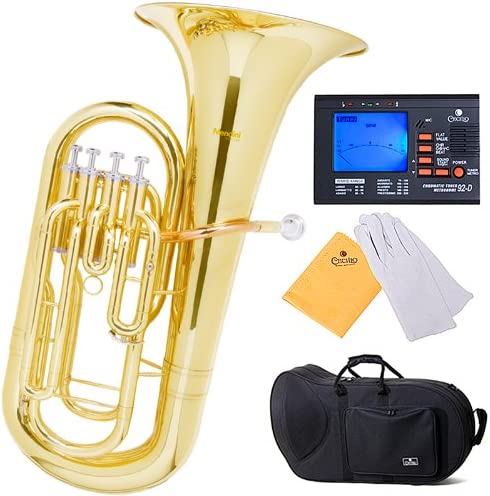
Another affordable option you may want to try is the Mendini MEP-L. This model features a yellow brass body with gold lacquer, but the leadpipe uses rose brass.
It comes with four top action piston valves, so you can explore the entire euphonium range. You’ll also get a mouthpiece, case, gloves, cleaning supplies, and a tuner.
If you’re on a tight budget, this is a suitable alternative to other brands. However, it probably won’t last as long as, say, the Yamaha model, so you may need to spend more on an upgrade within a year or two.
Pros
- Affordable
- Easy to play
- Good for beginners
- Comes with accessories
- Four valves
Cons
- Not the best quality
- Relatively short lifespan
FAQs about How to Play the Euphonium
Answer: The euphonium is easier than the trumpet when it comes to the embouchure, which is less firm. You also have less air resistance compared to the trumpet.
However, the euphonium is heavier than the trumpet, and it requires more air to get a nice sound. The easier instrument for you will probably be the one that interests you more.
Answer: The euphonium isn’t super popular because it’s a relatively young instrument. Like the saxophone, the euphonium didn’t come to be until the 1840s and isn’t a standard member of the orchestra.
I knew one guy in college whose main instrument was the euphonium, but he played the trombone in the orchestra and jazz band. Even the musician in this video plays trombone so that he can play in more ensembles.
Answer: The average euphonium weighs anywhere from 9 to 11 pounds, depending on the material and other specs. When I looked at the listings for plastic models, they said they were about 10 pounds.
But I’d guess that number includes the case. I couldn’t find an accurate number on the weight of a plastic euphonium by itself, but it’s probably less than 9 pounds.
Answer: Age usually isn’t the limiting factor regarding who can play the euphonium. As long as you’re physically big enough to hold the instrument and form a good embouchure, you can play it.
Many students reach that required size around middle school. But if you’re older, don’t let being older stop you from learning to play the euphonium. And if weight is a concern, give a plastic model a try.
Final Note on How to Play the Euphonium
Learning how to play the euphonium is exciting. You get to play alone, or you can look for ensembles to join in your local area.
If you want to start, make sure you get a good model, like the Yamaha YEP-201. I’d also suggest taking at least a couple of private lessons and setting aside time to practice music daily.
That way, you can improve consistently, and you may be able to play difficult solos in a few years.
Looking for more interesting readings? Check out:
